
The most famous artist outside Japan of the late feudal period was the Japanese ukiyo-e artist, illustrator, engraver Katsushika Hokusai. 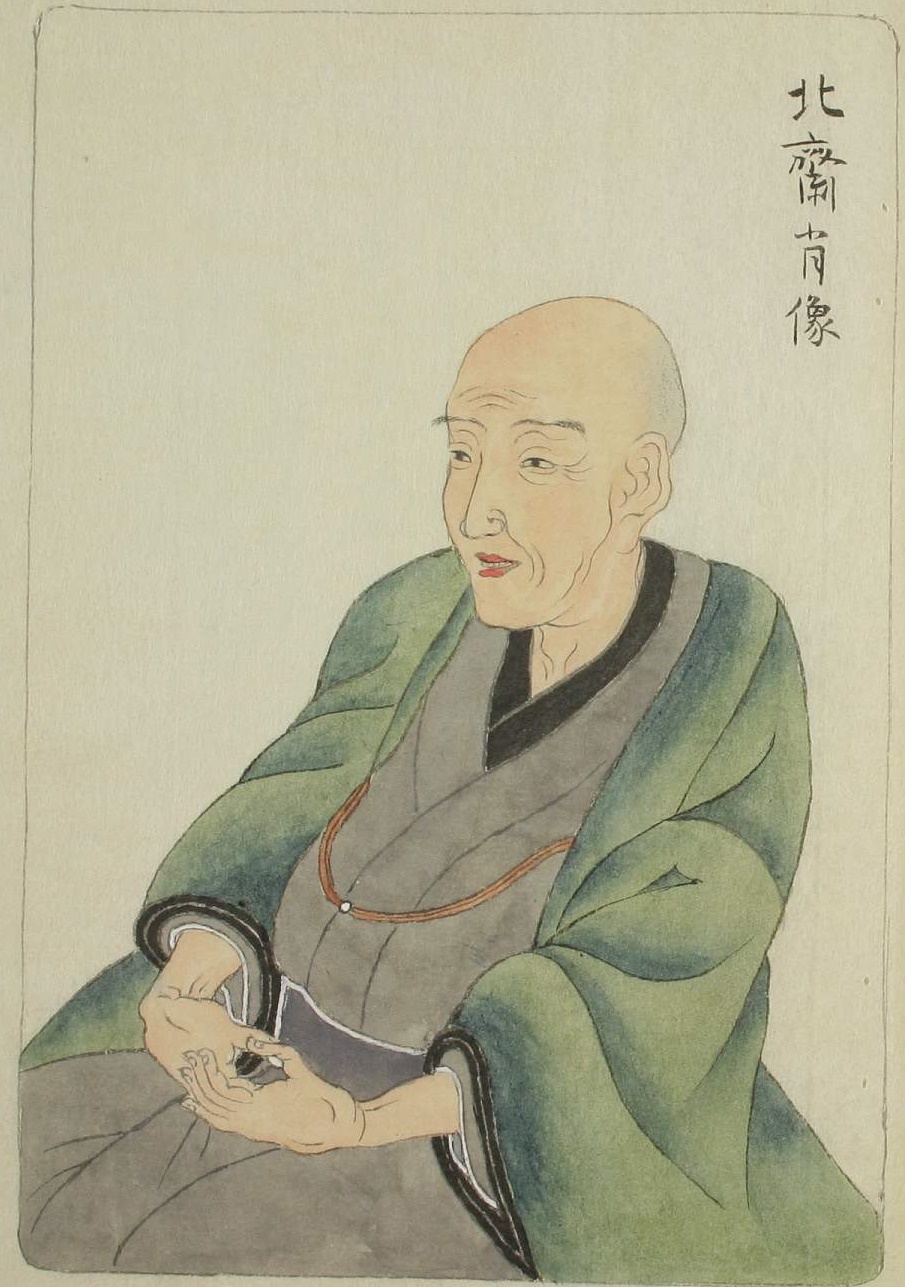

Portrait of Hokusai by his student
He was born into the family of a poor peasant who was forced to give him to the foster family of a mirror maker. Being exceptionally talented, Hokusai did not want to make mirrors all his life, but went to work in a bookstore, where he managed to learn Chinese. Then, until the age of nineteen, Hokusai worked as an engraver's apprentice, carefully studied the technique of carving, and soon began to produce high-quality engravings himself. In 1778, he was apprenticed to the famous ukiyo-e artist Katsukawa Shunshō (1726–1793).
A talented student enjoyed the special disposition of the master, carried out the most important orders. Starting to work independently, he became famous no less than his teacher. The main direction of creativity of both were portraits of actors of the Kabuki theater. He used and studied the experience of various Japanese schools, Chinese painting and European painting, which was extremely rare in Japan at that time. Throughout his long creative journey, Hokusai has always been critical of his achievements and constantly strived for improvement, not just imitating, but improving his style.
In the period after working on the portraits of actors, the main direction of Hokusai's work is illustrating books. It was from this that his development as a landscape painter began. Since the beginning of the XIX century. Yomihon (reading books) became popular, and Hokusai illustrated them. His illustrations of the highest quality dramatically increased the interest in this book. In total, he had about 50 pseudonyms, which testifies, in particular, to intense creative work and persistent search, because pseudonyms, as a rule, changed with a change in the style and nature of the creative manner.
A separate direction was the creation of pictorial scrolls, painting screens, large interior paintings.
He successfully worked in the smallest form of woodcuts - surimono. Hokusai is still considered the unsurpassed master of surimono, a small form of woodcut. Surimono is a type of colored woodcut that was primarily intended for a gift to the educated segments of the population.
A talented student enjoyed the special disposition of the master, carried out the most important orders. Starting to work independently, he became famous no less than his teacher. The main direction of creativity of both were portraits of actors of the Kabuki theater. He used and studied the experience of various Japanese schools, Chinese painting and European painting, which was extremely rare in Japan at that time. Throughout his long creative journey, Hokusai has always been critical of his achievements and constantly strived for improvement, not just imitating, but improving his style.
In the period after working on the portraits of actors, the main direction of Hokusai's work is illustrating books. It was from this that his development as a landscape painter began. Since the beginning of the XIX century. Yomihon (reading books) became popular, and Hokusai illustrated them. His illustrations of the highest quality dramatically increased the interest in this book. In total, he had about 50 pseudonyms, which testifies, in particular, to intense creative work and persistent search, because pseudonyms, as a rule, changed with a change in the style and nature of the creative manner.
A separate direction was the creation of pictorial scrolls, painting screens, large interior paintings.
He successfully worked in the smallest form of woodcuts - surimono. Hokusai is still considered the unsurpassed master of surimono, a small form of woodcut. Surimono is a type of colored woodcut that was primarily intended for a gift to the educated segments of the population.

Carps. Surinomo
Outside of Japan, his landscapes and everyday pictures depicting the daily life of late feudal Japan are best known. His landscape series "36 Views of Mount Fuji", "Journey Through the Waterfalls of the Country", "Poets of China and Japan", "Views of Famous Bridges", "100 Views of Mount Fuji", "Thousand Views of the Sea" are world famous.
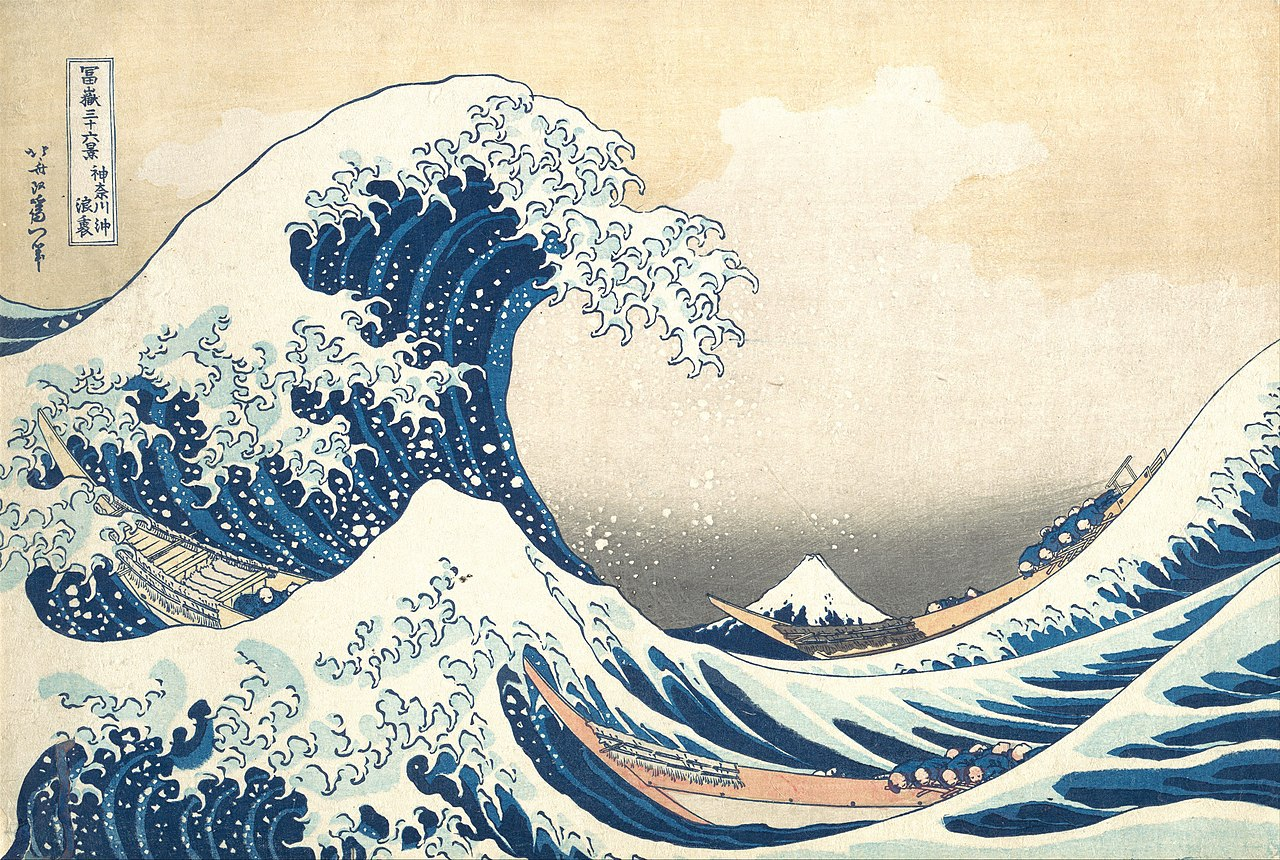
The Great Wave. Kanagawa
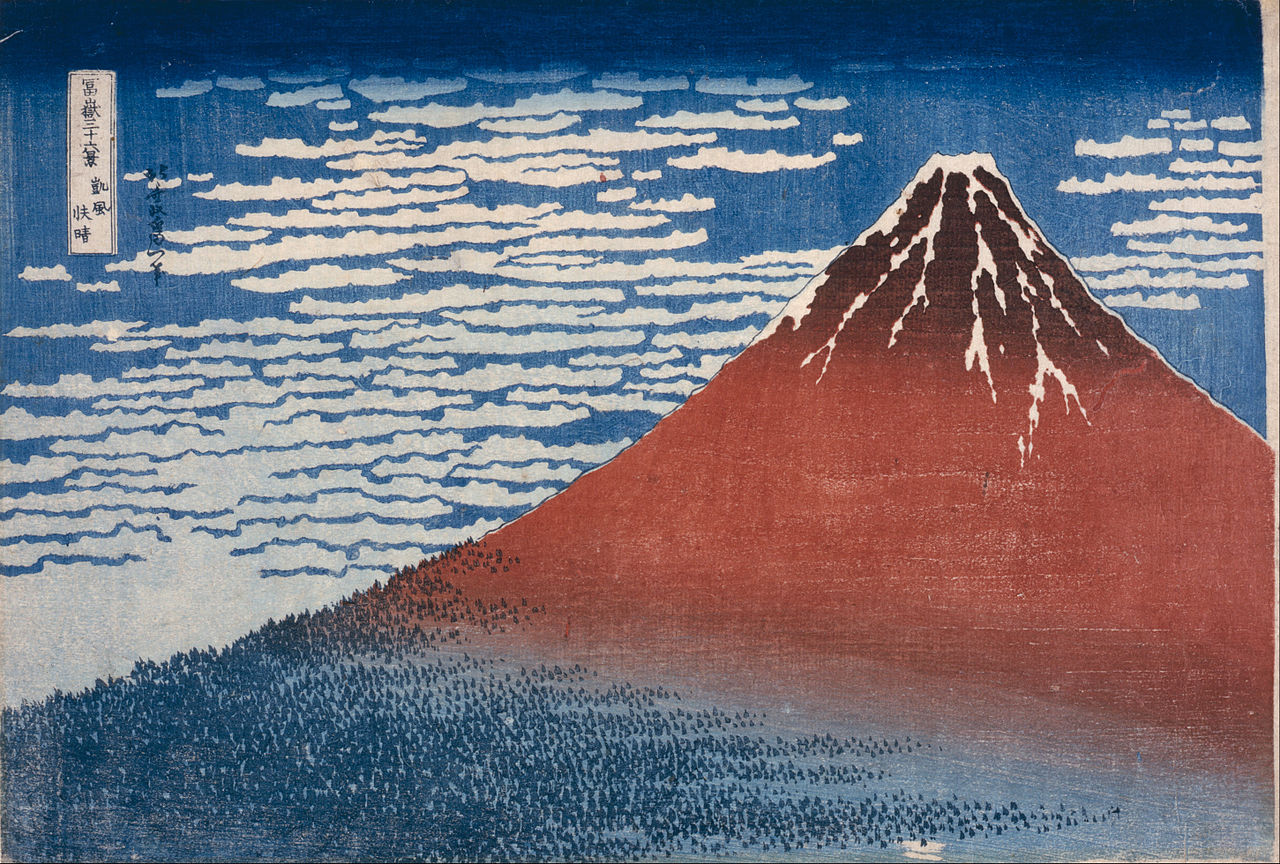
Red Fuji (from the series 36 Views of Fuji)
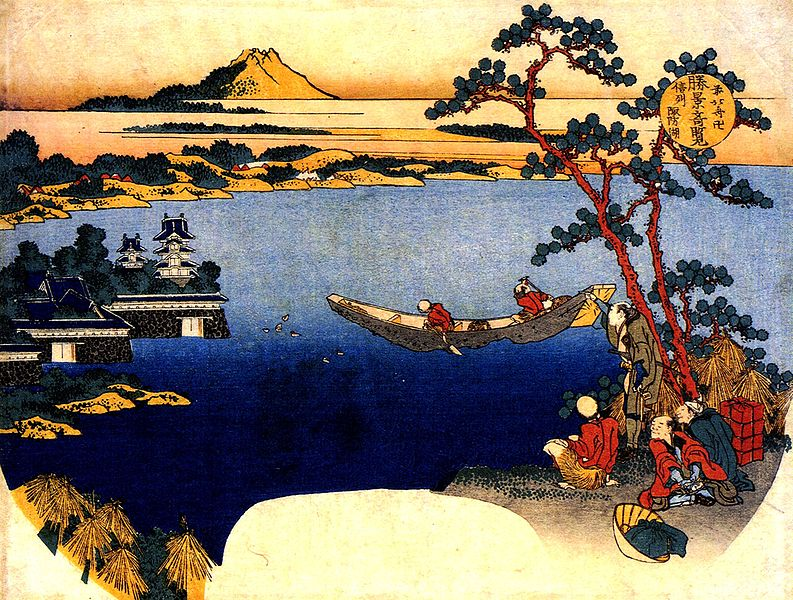
Lake Suwa in Shinano Province
From 1812 to 1836 Hokusai traveled a lot. From travel sketches in 1814, the first volume of "Manga" ("Book of Sketches") was compiled, which was then printed. There are 15 volumes in the book, the last three were published after the death of the author.
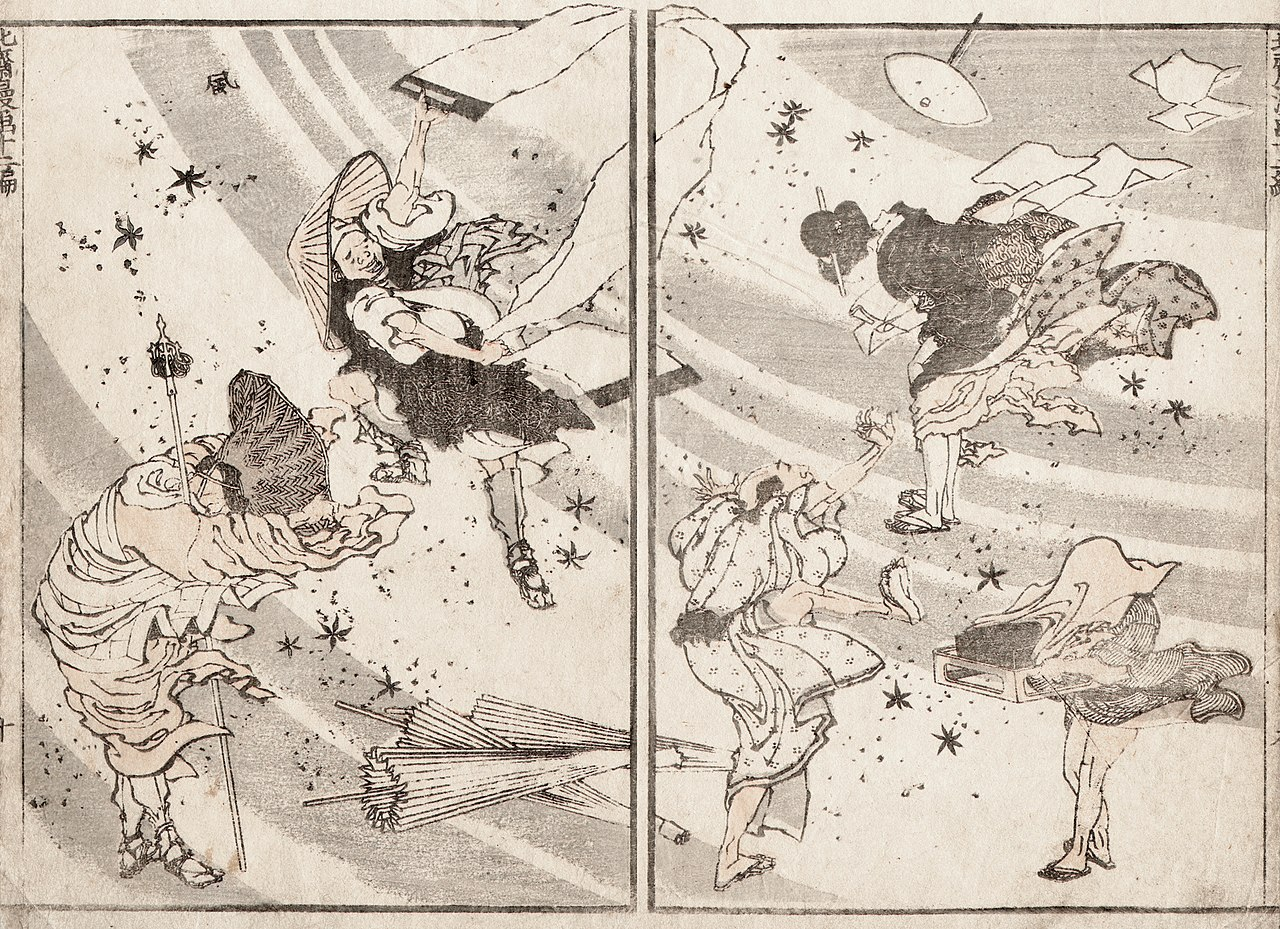
Wind. 1820. Manga.
The artist was interested in everything and sketched everything he saw. The artist left a huge legacy in the form of 30 thousand engravings, paintings, drawings, about 500 illustrated books.
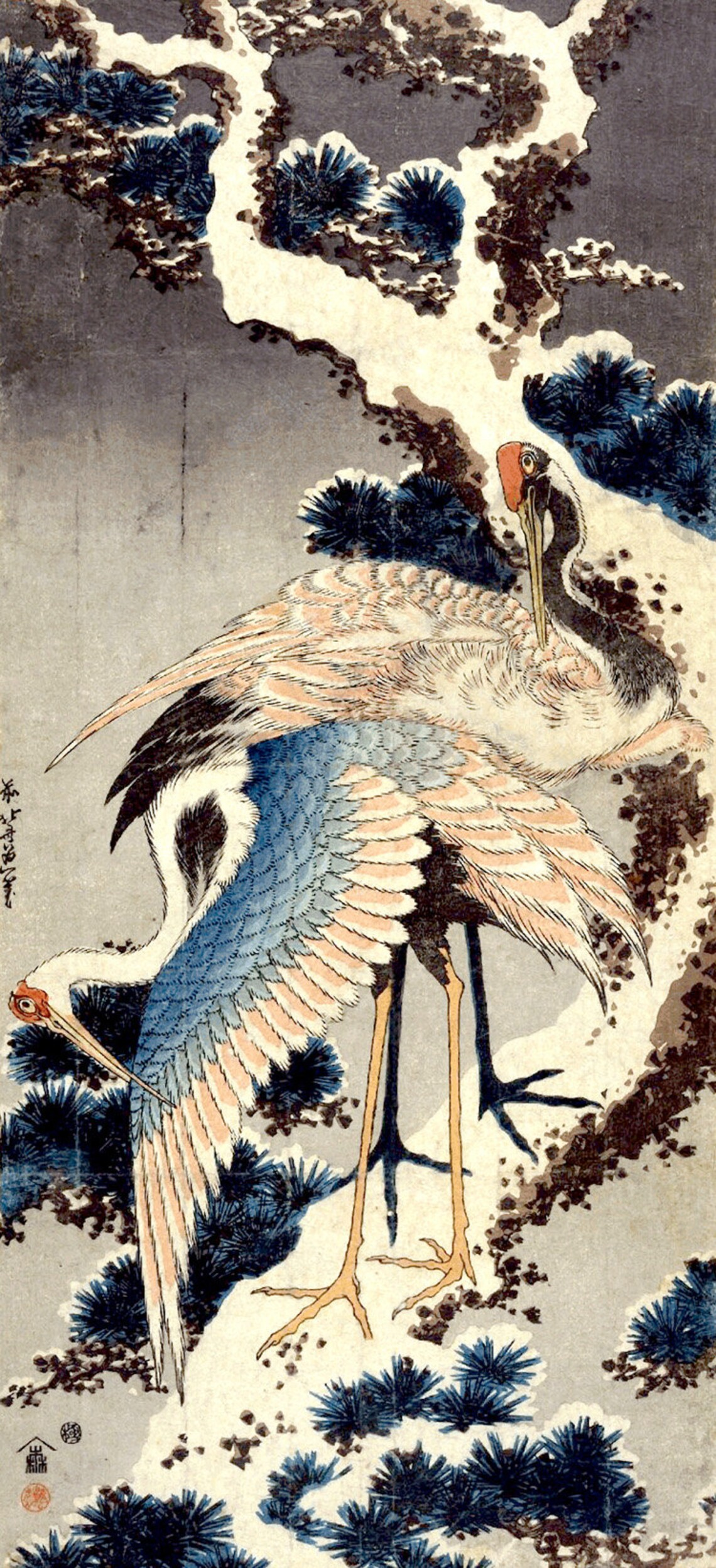
Winter. Cranes
